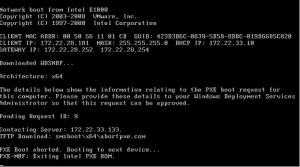How to Take a Screenshot: A Step-by-Step Tutorial


How to Take a Screenshot: A Comprehensive Step-by-Step Guide


Introduction
Screenshots have become an integral part of our digital lives, allowing us to capture and share information with ease. Whether you need to save an important document, report a software issue, or share a funny conversation, knowing how to take a screenshot is a valuable skill. In this comprehensive guide, we will walk you through the process of taking screenshots on various devices and platforms, including Windows, macOS, iOS, and Android. By following the step-by-step instructions and utilizing the recommended shortcuts, you’ll be able to master the art of capturing screenshots like a pro. So let’s get started!
Part 1: Taking Screenshots on Windows
1.1 Taking a Full-Screen Screenshot
Taking a screenshot of your entire screen is useful when you want to capture everything displayed on your monitor.
Step 1: Locate the Print Screen Key
Locate the “Print Screen” key on your keyboard. On most keyboards, it is labeled as “PrtSc” or “PrtScn” and is usually found in the top row.
Step 2: Capture the Entire Screen
Press the “Print Screen” key to capture a screenshot of the entire screen. The screenshot is saved to your clipboard.
Step 3: Save the Screenshot
Open an image editing program like Paint, Photoshop, or MS Paint. Press Ctrl+V or right-click and select “Paste” to paste the screenshot into the program. Finally, save the screenshot in your preferred image format, such as PNG or JPEG.
1.2 Taking a Screenshot of the Active Window
If you only want to capture the active window on your screen, such as a specific application or webpage, follow these steps:
Step 1: Focus on the Desired Window
Click on the window you want to capture to make it the active window.
Step 2: Capture the Active Window
Press the Alt+Print Screen keys simultaneously. This captures only the active window and saves it to your clipboard.
Step 3: Save and Edit the Screenshot
Open an image editing program, paste the screenshot (Ctrl+V or right-click and select “Paste”), and save it in your desired image format.
1.3 Taking a Screenshot of a Specific Area
Sometimes you may want to capture only a portion of your screen. Follow these steps to take a screenshot of a specific area:
Step 1: Launch the Snipping Tool
Windows provides a built-in Snipping Tool that allows you to capture screenshots of selected areas. To launch it, go to the Start menu and search for “Snipping Tool.” Open the tool once it appears in the search results.
Step 2: Choose the Snipping Mode
In the Snipping Tool, click on “New” to select the desired snipping mode: Free-form Snip, Rectangular Snip, Window Snip, or Full-screen Snip.
Step 3: Capture the Desired Area
Use your mouse to select the area you want to capture. Once selected, the captured screenshot will open in the Snipping Tool.
Step 4: Save the Screenshot
Click on the “Save” icon in the Snipping Tool to save the screenshot. Choose a location on your computer and specify the image format, such as PNG or JPEG.
Part 2: Taking Screenshots on macOS
2.1 Taking a Full-Screen Screenshot
Taking a screenshot of the entire screen on a Mac is a straightforward process. Follow these steps:
Step 1: Press the Keyboard Shortcut
To capture the entire screen, simultaneously press Shift+Command+3. You’ll hear a camera shutter sound, indicating that the screenshot has been taken.
Step 2: Access the Screenshot
The screenshot is automatically saved as a file on your desktop. Look for a file named “Screen Shot [Date] at [Time].png” and double-click to open it.
2.2 Taking a Screenshot of a Specific Area
If you only want to capture a specific area on your Mac screen, follow these steps:
Step 1: Press the Keyboard Shortcut
Press Shift+Command+4 to activate the screenshot tool. Your cursor will turn into a crosshair.
Step 2: Select the Area
Click and drag the crosshair to select the desired area for the screenshot. As you drag, the dimensions of the selected area will be displayed. Release the mouse button to capture the selected area.
Step 3: Access the Screenshot
The screenshot is automatically saved as a file on your desktop. Look for a file named “Screen Shot [Date] at [Time].png” and double-click to open it.
2.3 Taking a Screenshot of a Specific Window
To capture a specific window on your Mac, follow these steps:
Step 1: Press the Keyboard Shortcut
Press Shift+Command+4, followed by the Spacebar. Your cursor will turn into a camera icon.
Step 2: Select the Window
Move the camera icon over the desired window, and it will be highlighted in blue. Click on the window to capture a screenshot of it.
Step 3: Access the Screenshot
The screenshot is automatically saved as a file on your desktop.Look for a file named “Screen Shot [Date] at [Time].png” and double-click to open it.
Part 3: Taking Screenshots on iOS (iPhone/iPad)
3.1 Taking a Screenshot on an iPhone or iPad
Taking a screenshot on an iOS device is a simple process. Follow these steps:
Step 1: Locate the Buttons
Simultaneously press the Side button (located on the right side) and the Volume Up button (located on the left side).
Step 2: Capture the Screen
Press the Side button and the Volume Up button at the same time. The screen will flash, indicating that the screenshot has been taken.
Step 3: Access the Screenshot
To access the screenshot, go to the Photos app and open the “Screenshots” album. From there, you can view, edit, or share the screenshot as needed.
Part 4: Taking Screenshots on Android
4.1 Taking a Screenshot on Stock Android (Pixel Devices)
If you have a stock Android device like a Pixel phone, follow these steps to take a screenshot:
Step 1: Locate the Buttons
Press and hold the Power button and the Volume Down button simultaneously.
Step 2: Capture the Screen
Hold down the Power button and the Volume Down button until you see a notification or hear a sound indicating that the screenshot has been taken.
Step 3: Access the Screenshot
To access the screenshot, swipe down from the top of the screen to open the notification panel. Tap on the screenshot notification to view, edit, or share the screenshot.
4.2 Taking a Screenshot on Samsung Galaxy Devices
Samsung Galaxy devices have a slightly different method for taking screenshots. Follow these steps:
Step 1: Locate the Buttons
Press and hold the Power button and the Volume Down button simultaneously.
Step 2: Capture the Screen
Hold down the Power button and the Volume Down button until you see a visual or hear a sound indicating that the screenshot has been captured.
Step 3: Access the Screenshot
To access the screenshot, swipe down from the top of the screen to open the notification panel. Tap on the screenshot notification to view, edit, or share the screenshot.
Conclusion
Knowing how to take a screenshot is a valuable skill that enables you to capture and share information effortlessly. Whether you’re using Windows, macOS, iOS, or Android, this comprehensive guide has provided you with step-by-step instructions to capture screenshots on various devices and platforms. Remember to use the appropriate keyboard shortcuts or built-in tools specific to your device to ensure an efficient and accurate screenshot process. With this newfound knowledge, you can easily capture and share important moments, document software issues, or save valuable information with just a few simple clicks. So go ahead, start capturing those screenshots, and enhance your digital communication and productivity!








